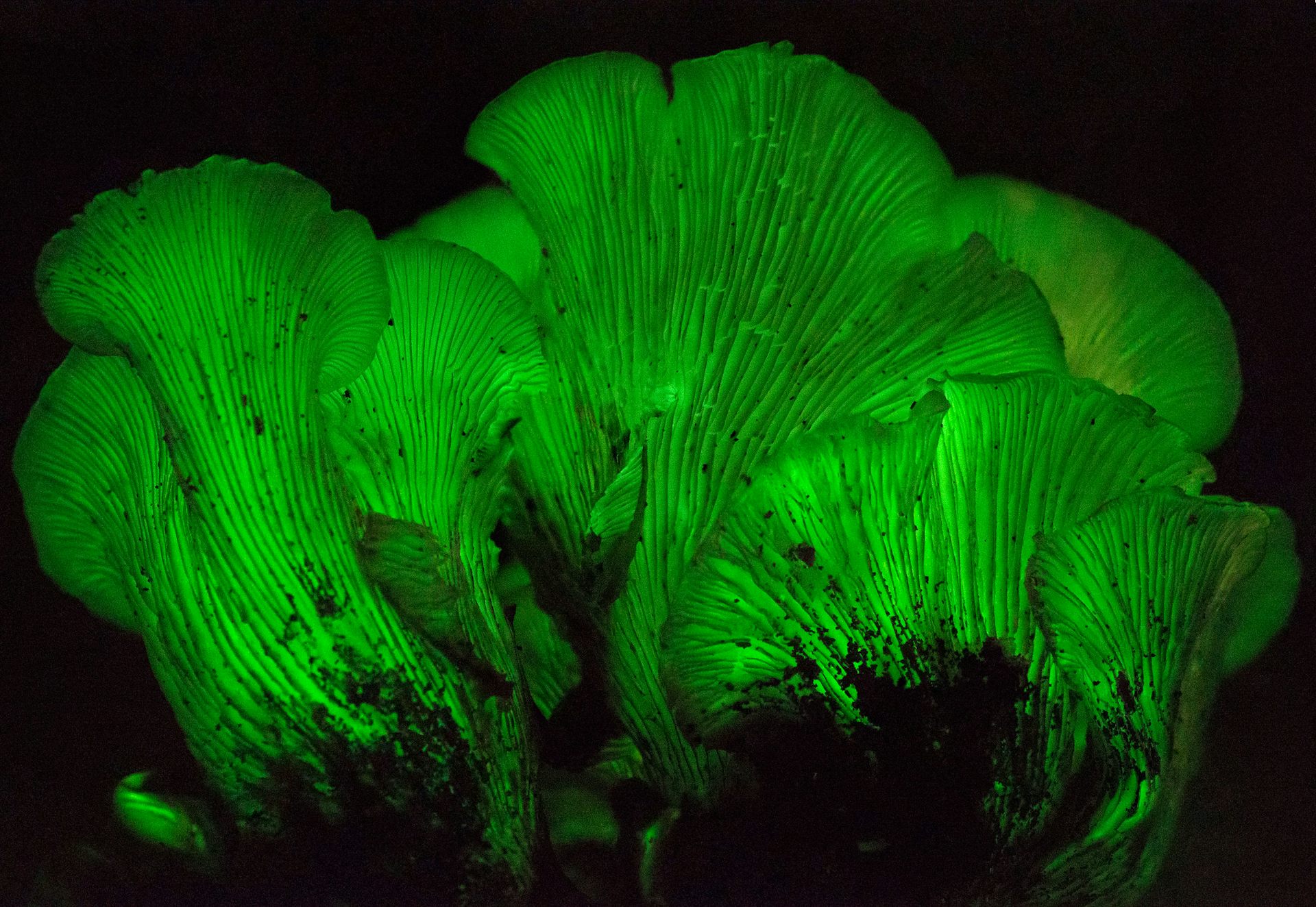Religion, Creationism, evolution, science and politics from a centre-left atheist humanist. The blog religious frauds tell lies about.
Showing posts with label Mycology. Show all posts
Showing posts with label Mycology. Show all posts
Monday, 26 August 2024
Refuting Creationism - How New Zealand's Fungi Evolved
Colourful fruit-like fungi and forests ‘haunted by species loss’ – how we resolved a 30-year evolutionary mystery
Fungi, like some primitive plants such as ferns and mosses reproduce with spores - tiny packages that contain the entire genome of the parent which have the capacity to grow and develop into a new adult able to produce spores of its own. The key to success is getting those spores dispersed and how a fungus manages that will depend on the environment in which it lives and reproduces.
Most fungi use wind dispersal, their spores being light enough to be carried considerable distances but where they land is a matter of chance, so must wind-dispersed fungi produce millions of spores to give them a good chance of just one or two landing in a suitable place.
A few others have evolved a different, more targeted strategy such as being eaten by animals and excreted in their faeces. This increases the chance of being deposited in the same environment in which the parent fungi lived as the dispersing animal also lives in that environment. This is the method adopted by truffles which produce their fruiting body (where the spores are produced) underground and emit a scent which is attractive to the target animal (pigs, dogs, etc.) which dig up the fruiting body and eventually disperse the spores. This is probably the reason that humans like the taste of truffles, although we lack the ability to sniff them out for ourselves, but possibly an early ancestral species could.
But what happens to these fungi if there are no mammals, other than bats, as was the case with New Zealand before humans brought their commensal species with them? This is the subject of an article in The Conversation by three experts: Jamie Wood, Senior Lecturer in Ecology and Evolution, University of Adelaide, Australia, and Amy Martin, Post-Doctoral Researcher in Evolutionary Ecology and Anne Gaskett, Associate Professor of Biology, both of the University of Auckland, Waipapa Taumata Rau, New Zealand.
Their article is reproduced here under a Creative Commons license, reformatted for stylistic consistency:
Thursday, 7 March 2024
Creationism in Crisis - Evolution of Porcini Fungus
Porcini mushrooms Boletus Edulis
A tale of terroir: Porcinis evolved to the local environment – @theU

This illustration is a little misleading because mycelia are often much larger than any of their mushrooms that appear on the surface of the soil or tree stumps. Fungi can grow up to a half a mile of the thread-like hyphae a day. In fact, the largest known organism on the planet is the Humongous Fungus (Armillaria ostoyae) in The Malheur National Forest, Oregon, measuring 2,385 acres (3.72 square miles) in area. It is estimated to be between 1900 and 8650 years old.
Photo credit: FoodPrint.org
Creationists should note here that the scientists who produced the report see this 'problem' entirely within the Theory of Evolution by Natural Selection (TOE). The strangeness is not a problem for the theory but an example of how a fundamental principle of the theory - environmental selection - operates in North America.
The 'problem' is that while Boletus edulis exists in North America as a number of different varieties and genetically distinct populations, probably caused not so much by geographical isolation as environmental adaptation, albeit with regular ingress from surrounding populations, In Eurasia, a single genetic lineage dominates from Spain to Georgia to Scandinavia, so the interesting question is why does is the species genetically continuous in Eurasia but fragmented in North America; what is the difference between the two landmasses that causes this difference.
The Eurasian and North American populations are believed to have become separated during a period of climatic change and the onset of glaciation, 1.62–2.66 years ago. Attempts to segregate populations of Boletus edulis into distinct species based on phenotype have foundered on the genetic evidence, illustrating how small genetic differences can give large phenotypic differences and how a species in the process of speciating passes through a stage at which the diverging populations have not diverged sufficiently to qualify as new taxons because the practice of taxonomy tries to fit a continuous process into a series of distinct events.
The 'problem' is the subject of a free access paper in the journal New Phytologist by Keaton Tremble and Bryn T. M. Dentinger from Utah University, Utah, USA. together with J. I. Hoffman from Bielefeld University, Germany, and was described in a University of Utah press release:
Labels:
Biodiversity
,
Biology
,
Creationism in Crisis
,
Evolution
,
Mycology
,
Science
Friday, 25 November 2022
Creationism in Crisis - Genetics Confirms Common Ancestry of 'Oddball' Fungi
Genome studies uncover a new branch in fungal evolution | Folio

In a stunning example of the power of the Theory of Evolution (TOE) to explain otherwise puzzling observations, a team of scientists led by principal investigator, Toby Spribille an associate professor in Alberta University's Department of Biological Sciences, has shown how some 600 'oddball' fungi share a common ancestor that lived about 300 million years ago.
The problem was that the usual Linnaean method of classification, using the appearance of organisms, some 600 strange fungi were difficult to fit into any single taxon.
In addition to this obvious confirmation that the TOE is the basis of biology, confirmed by genetics, there is the additional embarrassment for Creationists in the finding that the diversity of this group is due to a loss of genetic information, made possible by a symbiotic existence, where the co-symbiont has taken on some of the basic functions. That a loss of information is always detrimental and evolution requires an increase in information is now a central dogma of Creationism that flies in the face of evidence such as this.
The Alberta University news release explain the research:

The earth tongue is one of 600 “oddball” fungi that were found to share a common ancestor dating back 300 million years, according to University of Alberta researchers.
Photo: Alan Rockefeller, (CC-BY-SA-4.0)
In a stunning example of the power of the Theory of Evolution (TOE) to explain otherwise puzzling observations, a team of scientists led by principal investigator, Toby Spribille an associate professor in Alberta University's Department of Biological Sciences, has shown how some 600 'oddball' fungi share a common ancestor that lived about 300 million years ago.
The problem was that the usual Linnaean method of classification, using the appearance of organisms, some 600 strange fungi were difficult to fit into any single taxon.
In addition to this obvious confirmation that the TOE is the basis of biology, confirmed by genetics, there is the additional embarrassment for Creationists in the finding that the diversity of this group is due to a loss of genetic information, made possible by a symbiotic existence, where the co-symbiont has taken on some of the basic functions. That a loss of information is always detrimental and evolution requires an increase in information is now a central dogma of Creationism that flies in the face of evidence such as this.
The Alberta University news release explain the research:
Saturday, 8 October 2022
Biodiversity News - How Trees and Fungi Need Each Other and We Need Both
The ancient, intimate relationship between trees and fungi, from fairy toadstools to technicolour mushrooms
One of the most important symbiotic relationships on the planet is that between trees and fungi, without which we would have no trees, no forests, no timber, less oxygen and according to climatologists, very different weather patterns.
We would also not have all the species that depend on trees and forests which support one of the most diverse biota on the planet.
Trees themselves are an example of unintelligent design, as I explain in my book, The Unintelligent Designer: Refuting the Intelligent Design Hoax because their trunks and branches are the result of a massively wasteful arms race, as each tree competes with its neighbours to get its leaves above the canopy and into the sunlight. The result is a massive waste of energy and resource to build a structure which would have been unnecessary, had the ancestors of today's trees all being intelligently designed to stay at ground level and not compete for resources.
As a result of this unnecessary and wasteful complexity, another layer of complexity in the form of this symbiotic relationship between trees and fungi, which makes this possible, has evolved. Without it, trees could not obtain the nutrients they need or pump the water the leaves need to the top of the structure. So, from the perspective of the notion of intelligent [sic] design, we have massive waste and needless complexity to solve problems of the designer’s own incompetent making. So this relationship between fungi and trees represents one of the most glaring examples of the lack of foresight, planning and intelligence in whatever the design process behind it was.
From an evolutionary perspective, however, there is no need to explain bad design since there is no design process, as any intelligent person would understand it, involved. The result put the evolution of life on Earth on a trajectory that resulted in what we see today, and on which thousands of species are now dependent having evolved specialisations fitting them to live and survive in those niches by a process of co-evolving co-dependency - a predictable consequence of the process of evolution by natural selection.
The symbiotic relationship is between the roots of trees and the fungal hyphae in the soil, known as mycorrhizas. It is a lovely example of how Richard Dawkin's 'selfish genes' will form mutually beneficial alliances with the genomes of two or more organisms behaving like a single genome, albeit stored in different cells, co-evolving an every closer relationship, not of wasteful competition but of the more efficient cooperation, because cooperation benefits both organisms.
In another of the The Conversation series, 'Photos from the Field', Doctor Gregory Moore of The University of Melbourne and Associate Professor Mark Brundrett of the School of Biological Sciences, The University of Western Australia, explain this relationship, its evolutionary origins and why it is so important to the ecology of the planet. The open access article is reproduced here under a Creative Commons licence, reformatted for stylistic consistency. The original article can be read here:

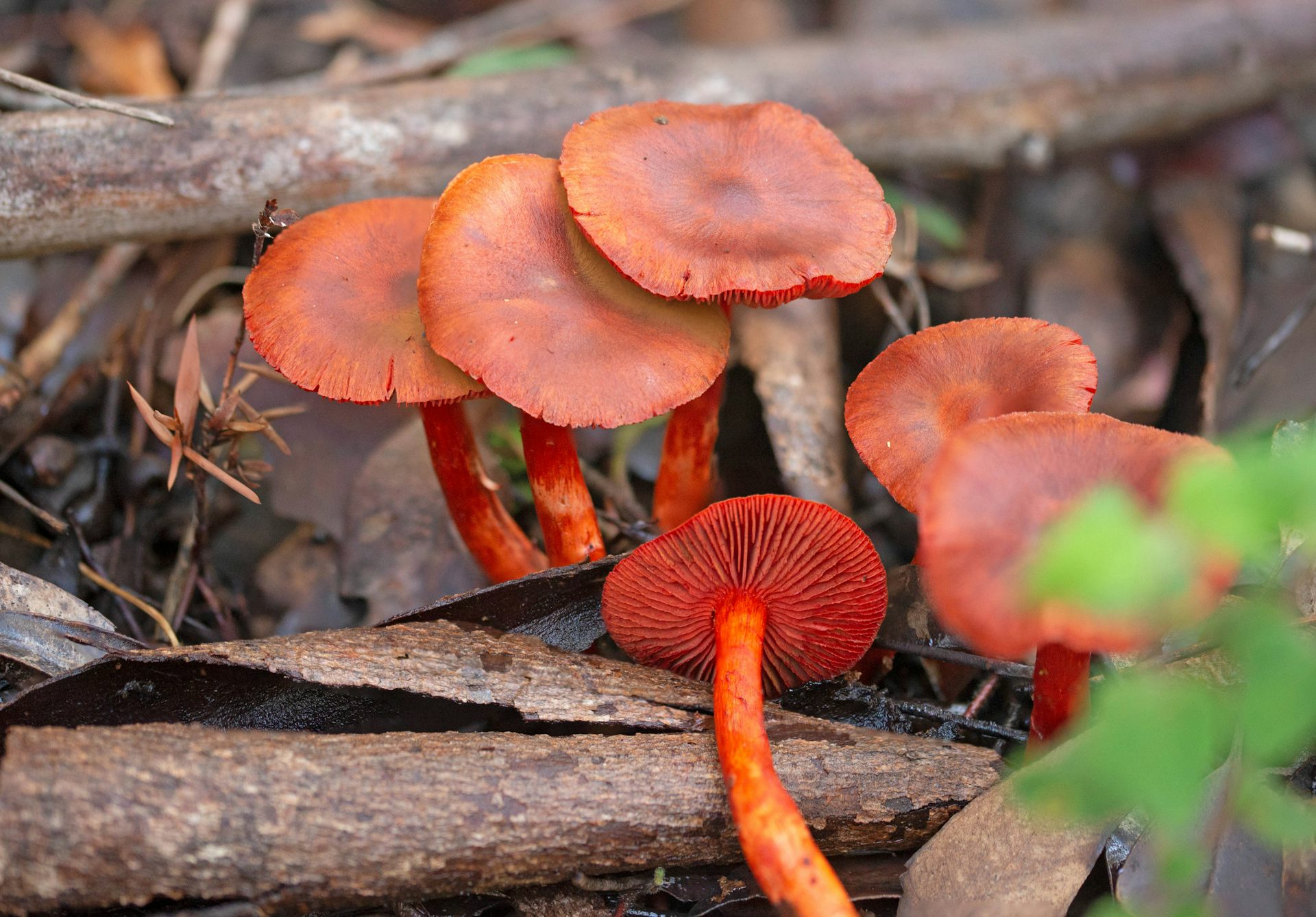 Gregory Moore, The University of Melbourne and Mark Brundrett, The University of Western Australia
Gregory Moore, The University of Melbourne and Mark Brundrett, The University of Western Australia
Environmental scientists see flora, fauna and phenomena the rest of us rarely do. In this series, we’ve invited them to share their unique photos from the field.
You may be familiar with the red toadstool with white spots, which are often the homes of fairies in children’s stories. These toadstools are also a small part of grander magical story: they are striking examples of mycorrhizas.
Mycorrhizas (pronounced my-cor-rye-zas) is the name for fungi associated with the root systems of many plants including trees, shrubs, groundcovers and grasses. These relationships are mutually symbiotic, which means both members benefit.
Fungi have a deeply ancient evolutionary origin, and colonised land with the first plants around 500 million years ago to form these partnerships. We humans often underestimate their importance to the ecosystems that have shaped life on earth.
So let’s take a closer look at how this relationship works and why it’s so important for Australian ecosystems.
An intimate relationship
Fungi come in a beautiful diversity of shapes, sizes and colours. The following photos by my co-author Mark Brundrett are just a few examples of those growing in southwest Australia.
Mycorrhizas are not to be confused with fungi that decompose dead plant matter (saprophytes) or those that cause disease (pathogens).
Saprophytes are fungi that recycle nutrients, and these can also be large and impressive. They can create tree hollows, which provide shelter for nesting birds and other animals such as possums.
The ethereal ghost fungus, for example, is a saprophyte. It famously glows green in the dark, and recycles nutrients in ecosystems by breaking down dead wood.
The primary role of mycorrhizas, on the other hand, is to provide resources such as phosphorus and nitrogen to flowering plants. They also effectively increase the absorptive surface area of the plant’s root system, allowing plants to take up much-needed water and nutrients so they grow better and more quickly.
In return, the plants provide carbohydrates, a product of photosynthesis, which mycorrhizas require to grow.
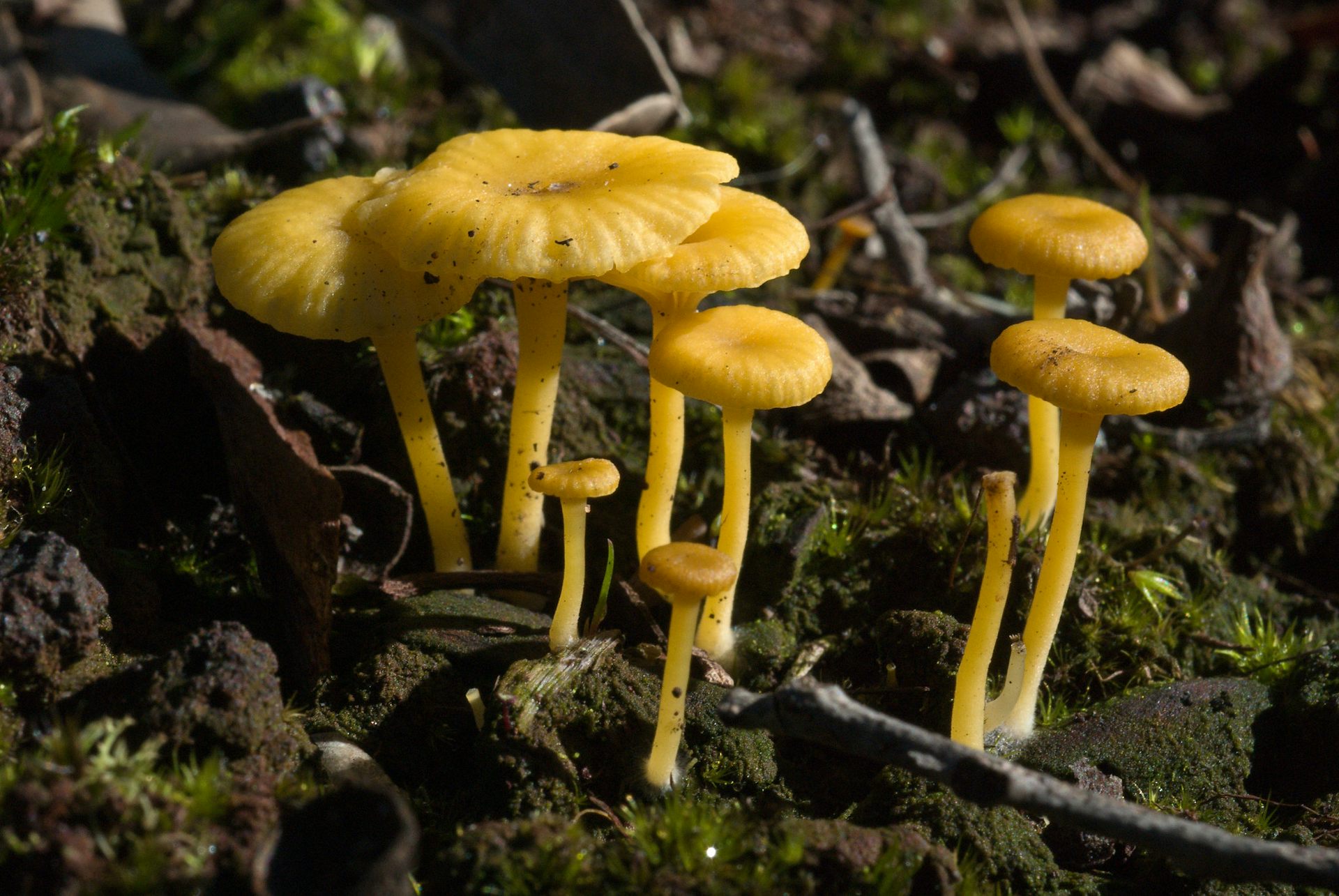
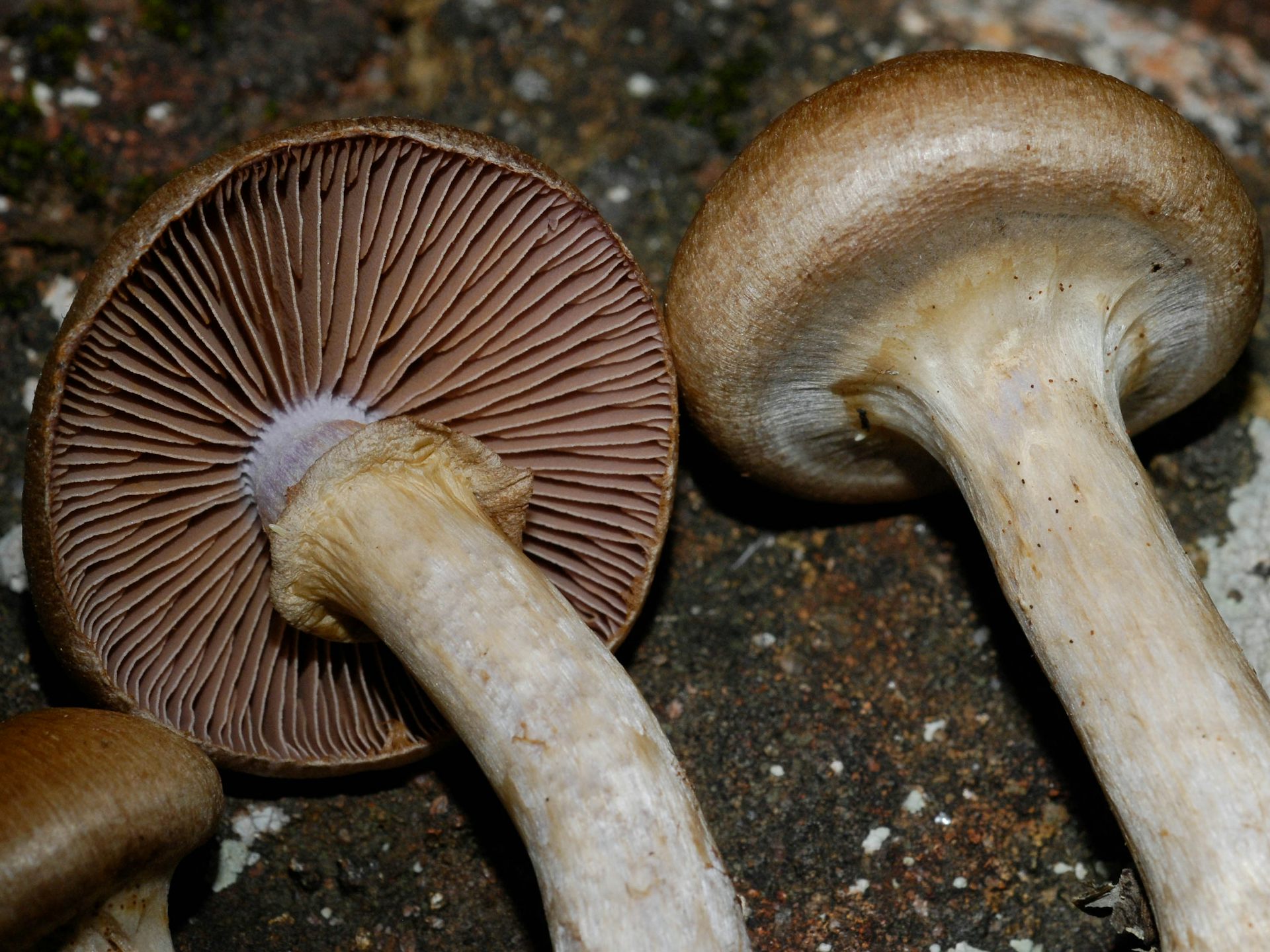
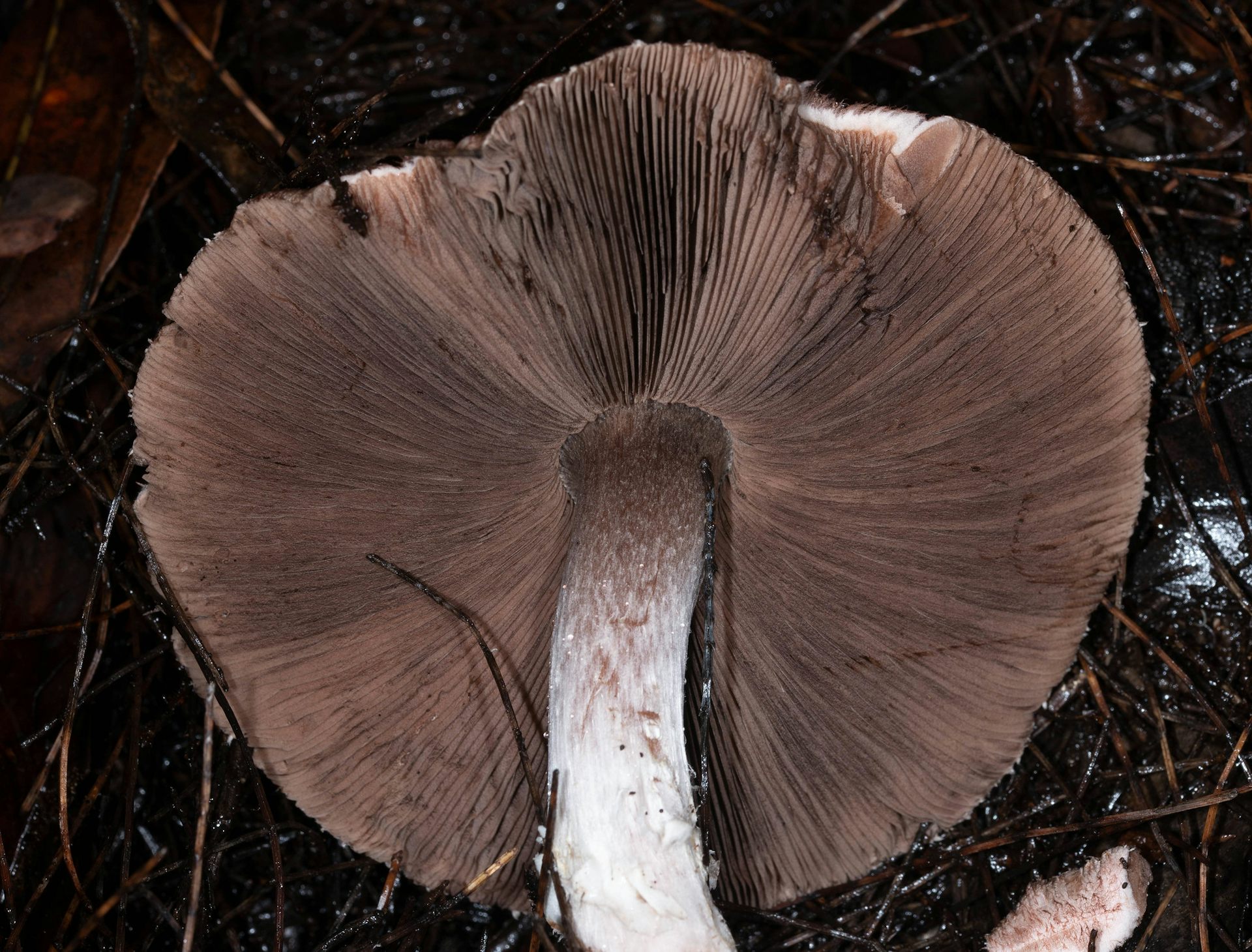 There are five different types of mycorrhizas, and two of these are particularly important in Australian ecosystems. One type is called “ectomycorrhiza”, where fungi wrap their hyphae (long, very fine hair-like structures that contact the soil) around the plant roots underground but don’t penetrate the root cells.
There are five different types of mycorrhizas, and two of these are particularly important in Australian ecosystems. One type is called “ectomycorrhiza”, where fungi wrap their hyphae (long, very fine hair-like structures that contact the soil) around the plant roots underground but don’t penetrate the root cells.
The other, called “endomycorrhiza”, is where fungi grow into the plant root, penetrating and branching within the root cells to form what look like little, microscopic trees. This is about as intimate a relationship between different types of organisms as you can get!
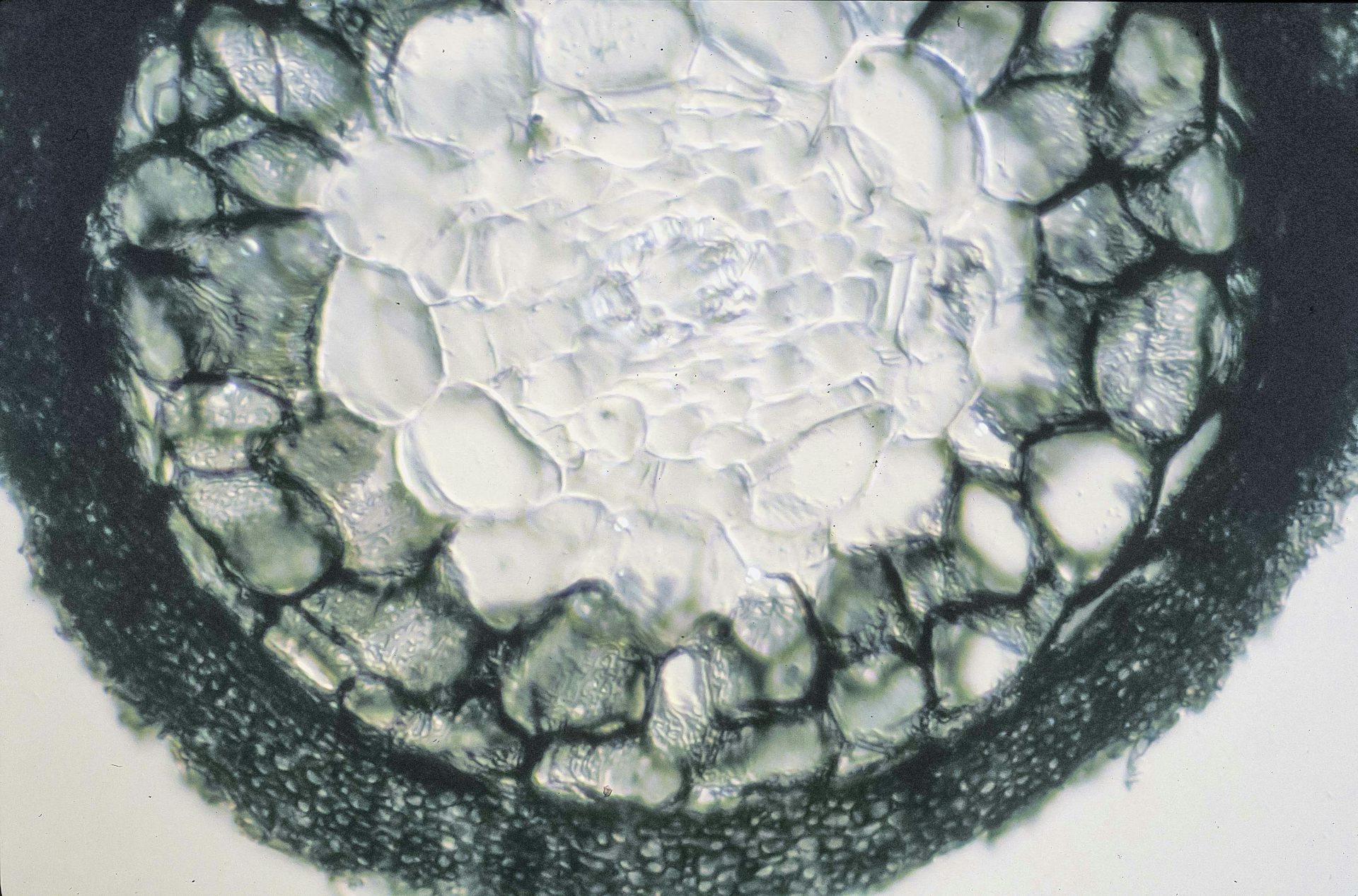
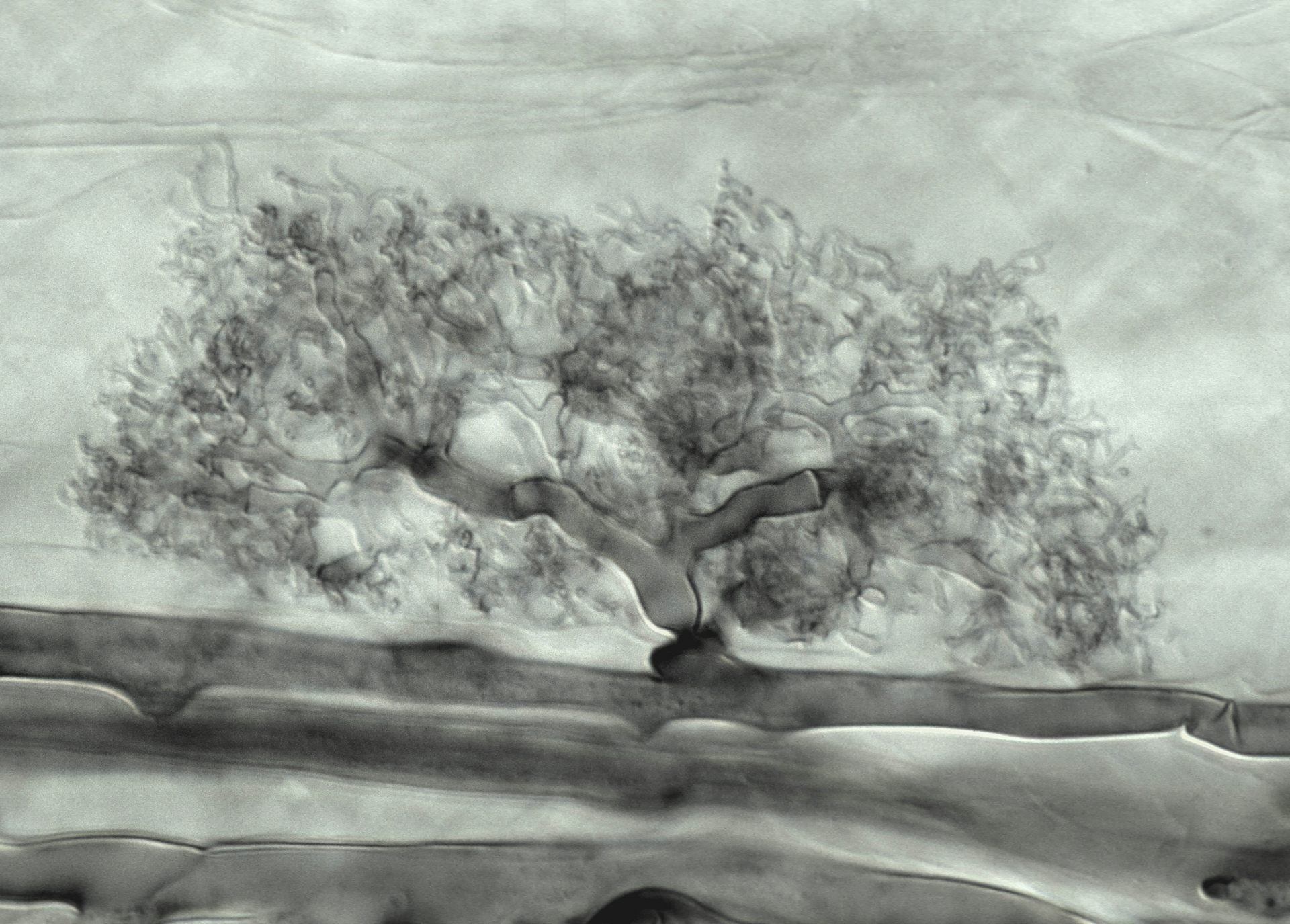 Mushrooms as big as dinner plates
Mushrooms as big as dinner plates
We often become aware of the presence of mycorrhizas only when conditions for reproduction are right, and a mushroom or toadstool emerges from the ground. Such conditions may only occur every five to ten years. For some species, there may be centuries between reproductive events.
For many of us, our experience with mycorrhizal fungi begins in very early childhood when we first catch sight of those spotty red and white toadstools, called the fly agaric or Amanita muscaria.
These fungi are often depicted in children’s book illustrations, such as Little Red Riding Hood, Jack and the Beanstalk, and a number of Enid Blyton’s tales. I recall conifers, such as pine trees, often growing nearby in the background of these pictures. This was no coincidence, Amanita muscaria forms mycorrhizal associations with many conifers, as well as oaks.

 The mycorrhizal fungi associated with eucalypts can be less showy, with many being 75-100 millimetres across and a creamy, light tan in colour. They quite often pop up in home gardens, frequently in lawns, where they’re very obvious and usually within 4 to 5 metres of a tree trunk.
The mycorrhizal fungi associated with eucalypts can be less showy, with many being 75-100 millimetres across and a creamy, light tan in colour. They quite often pop up in home gardens, frequently in lawns, where they’re very obvious and usually within 4 to 5 metres of a tree trunk.
Others are spectacular, including the bright purple, orange or green Cortinarius species shown in the photos below. In fact, the beauty and diversity of our fungi now supports a new ecotourism industry in Australia, particularly in Tasmania.
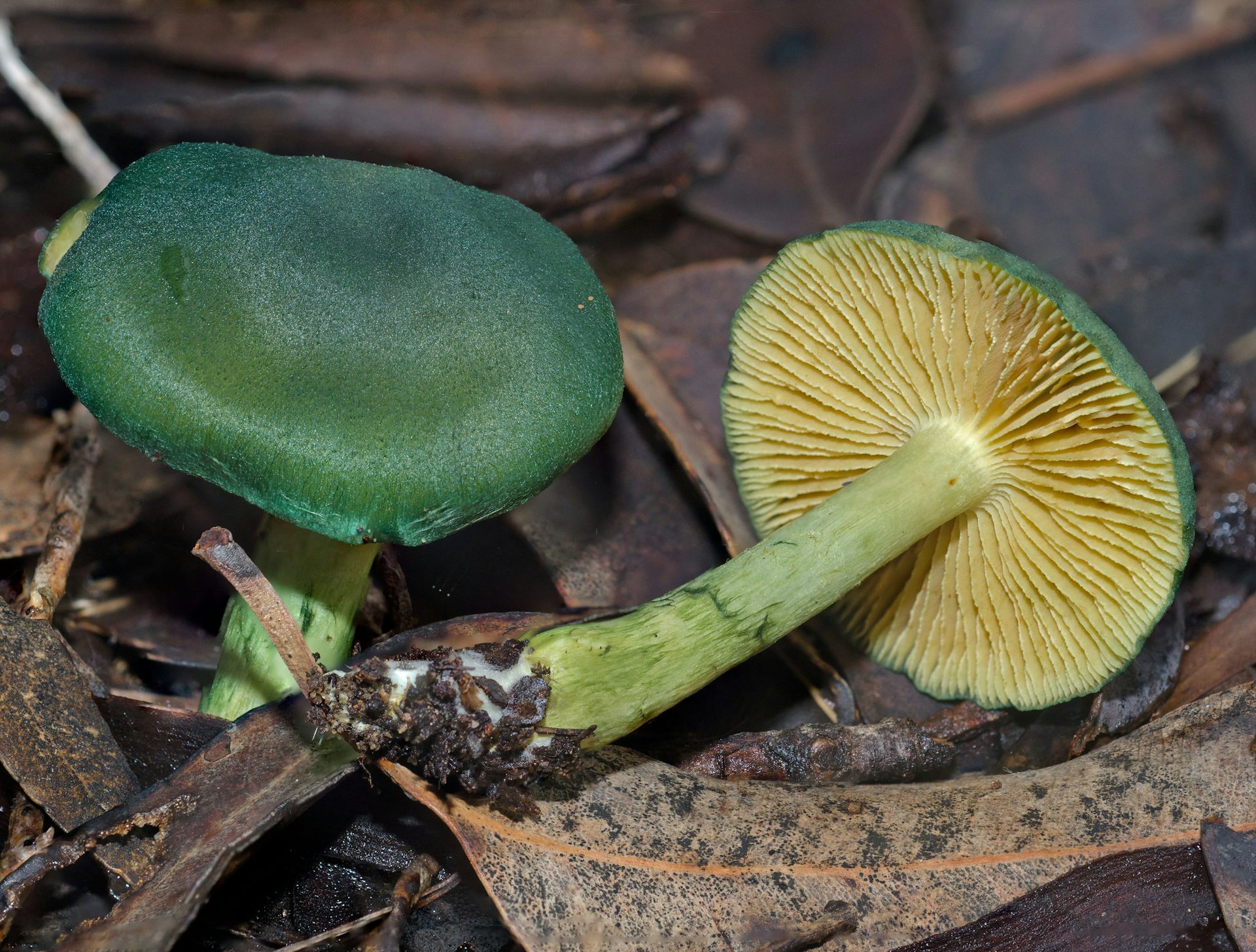
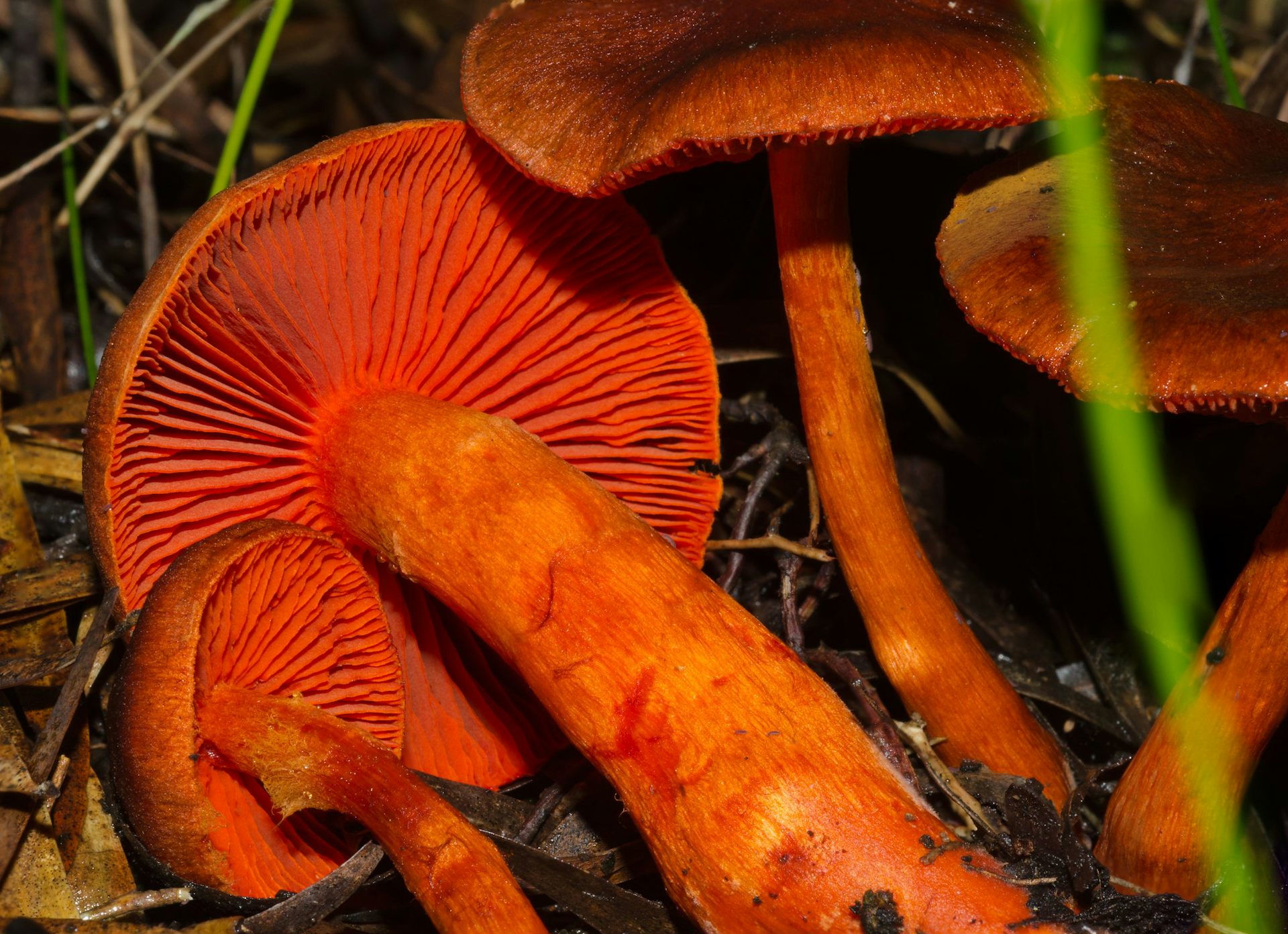
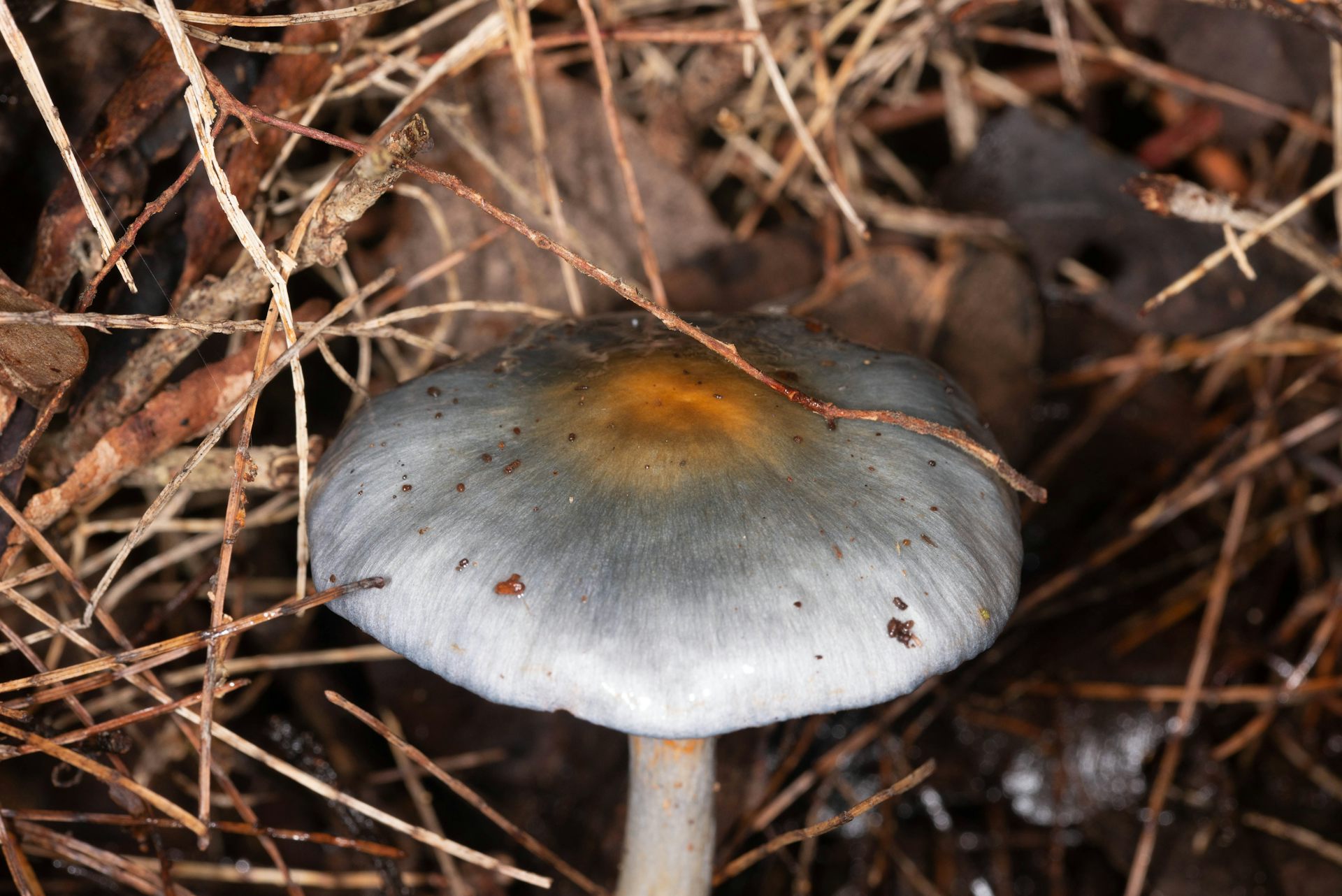 Some fungi are most impressive in the spring following bushfires, such as the abundant orange cup fungus shown below that stabilises ash beds.
Some fungi are most impressive in the spring following bushfires, such as the abundant orange cup fungus shown below that stabilises ash beds.
 Indeed, most plants form mycorrhizal associations. Those that don’t include plants from the common vegetable families Brassicaceae (think broccoli, cauliflower, kale) and Chenopodiaceae (spinach, beetroot, and quinoa). Neither do members of the Proteaceae family, such as native banksias and grevilleas. These plants invest in very complex roots rather than fungal associations.
Indeed, most plants form mycorrhizal associations. Those that don’t include plants from the common vegetable families Brassicaceae (think broccoli, cauliflower, kale) and Chenopodiaceae (spinach, beetroot, and quinoa). Neither do members of the Proteaceae family, such as native banksias and grevilleas. These plants invest in very complex roots rather than fungal associations.
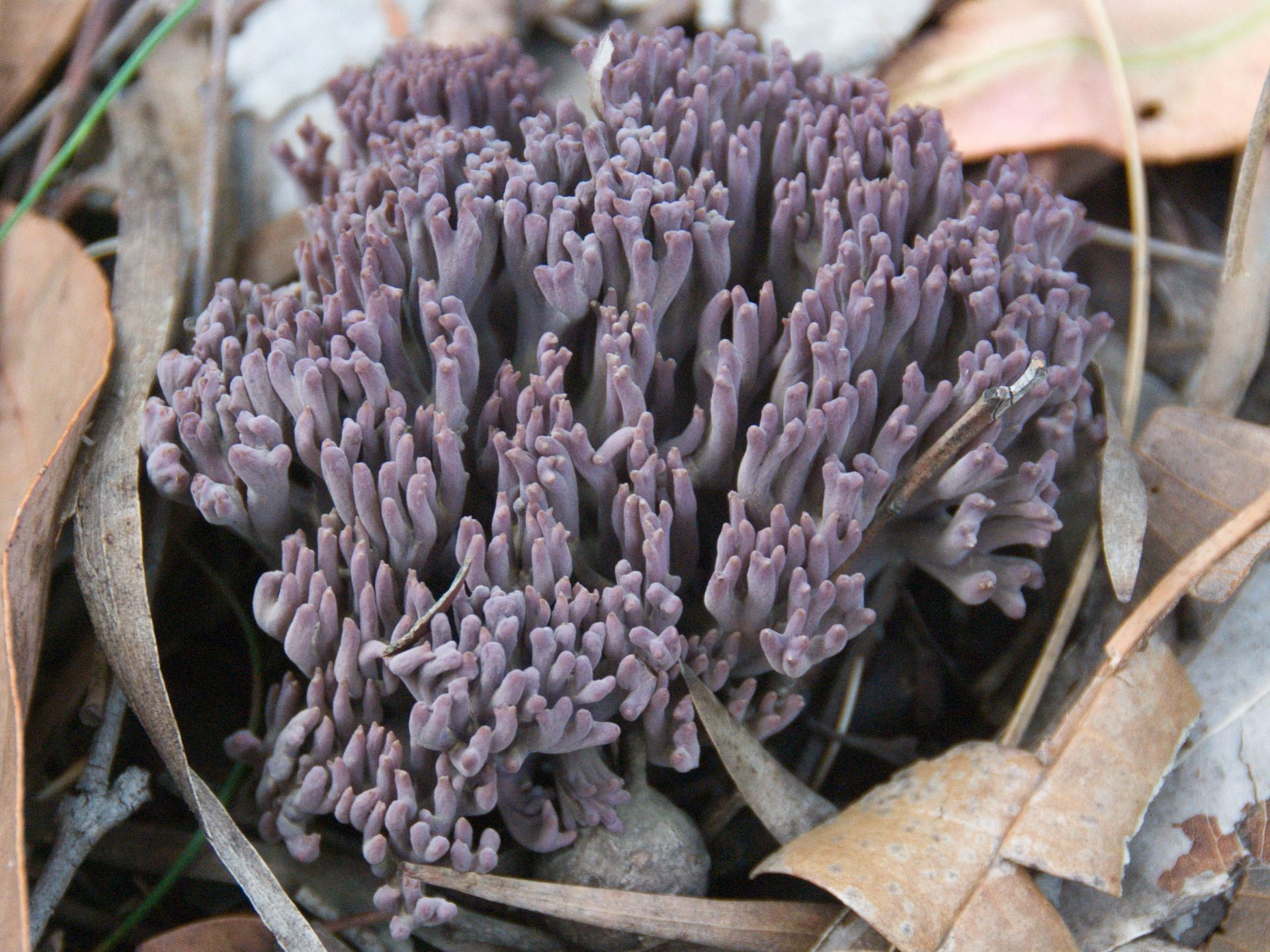
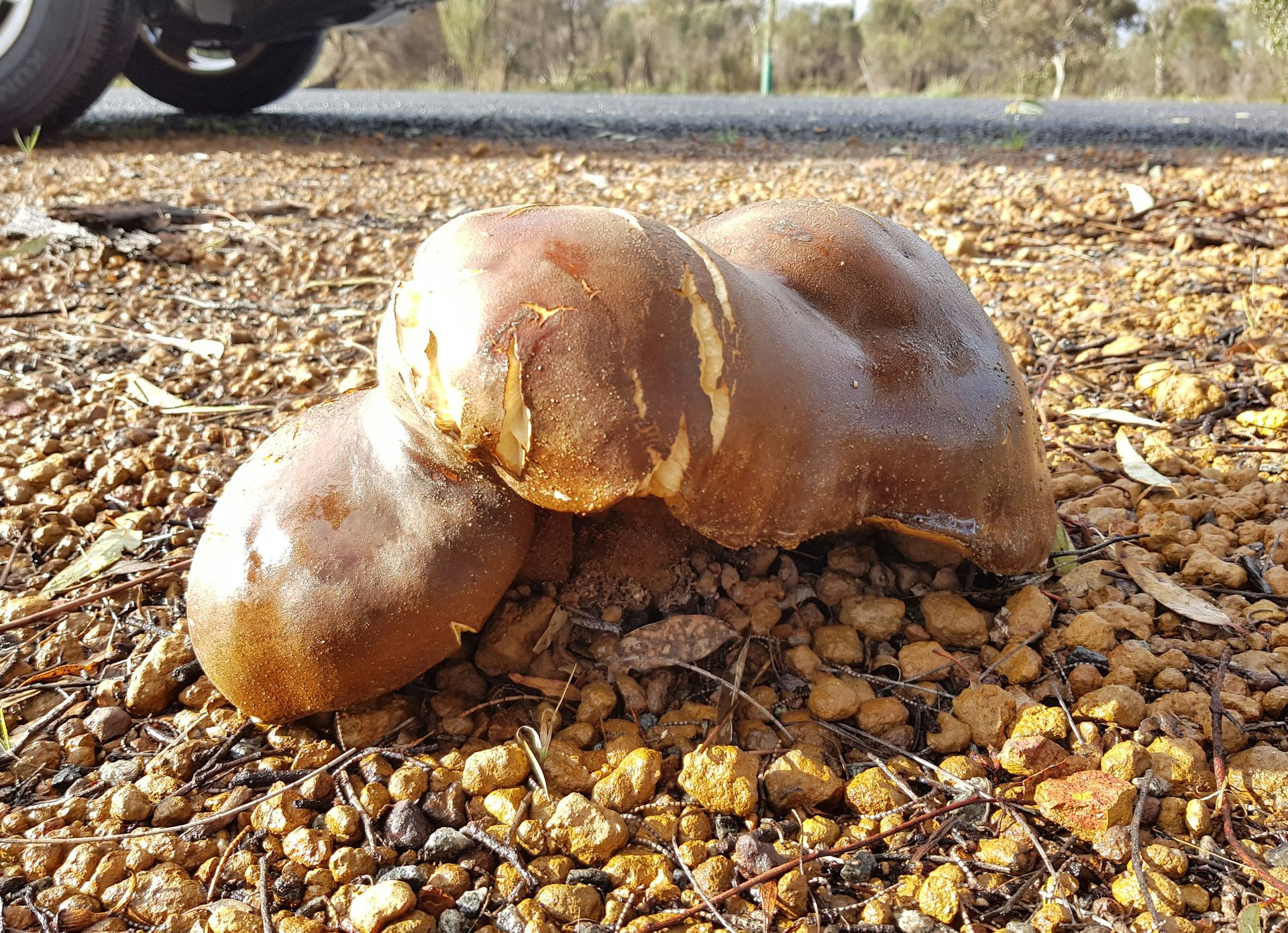 Who’s really in control?
Who’s really in control?
Because we are so familiar with many of the plants in our environment, we are inclined to think it’s them that control their relationship with mycorrhizal fungi.
But it is possible mycorrhizal fungi exercise much more control. Or perhaps, the relationship is a perfect mutualistic symbiosis where partners share everything, including control, equally. We just don’t know yet.
Members of the fungus kingdom work in synchrony with the plant kingdom to support all terrestrial life, including animals such as ourselves. We may not think about fungi very often, but we cannot survive without them.
One of the surprise elements of Douglas Adam’s Hitchhiker’s Guide to the Galaxy, was that the Earth and its inhabitants existed as part of an experiment designed and controlled by white laboratory mice.
I sometimes wonder if the fate of the Earth’s terrestrial ecosystems rests on mycorrhizal fungi. If so, perhaps we need to show them greater respect.
 Gregory Moore, Doctor of Botany, The University of Melbourne and Mark Brundrett, Adjunct Associate Professor, School of Biological Sciences, The University of Western Australia
Gregory Moore, Doctor of Botany, The University of Melbourne and Mark Brundrett, Adjunct Associate Professor, School of Biological Sciences, The University of Western Australia
One of the most important symbiotic relationships on the planet is that between trees and fungi, without which we would have no trees, no forests, no timber, less oxygen and according to climatologists, very different weather patterns.
We would also not have all the species that depend on trees and forests which support one of the most diverse biota on the planet.
Trees themselves are an example of unintelligent design, as I explain in my book, The Unintelligent Designer: Refuting the Intelligent Design Hoax because their trunks and branches are the result of a massively wasteful arms race, as each tree competes with its neighbours to get its leaves above the canopy and into the sunlight. The result is a massive waste of energy and resource to build a structure which would have been unnecessary, had the ancestors of today's trees all being intelligently designed to stay at ground level and not compete for resources.
As a result of this unnecessary and wasteful complexity, another layer of complexity in the form of this symbiotic relationship between trees and fungi, which makes this possible, has evolved. Without it, trees could not obtain the nutrients they need or pump the water the leaves need to the top of the structure. So, from the perspective of the notion of intelligent [sic] design, we have massive waste and needless complexity to solve problems of the designer’s own incompetent making. So this relationship between fungi and trees represents one of the most glaring examples of the lack of foresight, planning and intelligence in whatever the design process behind it was.
From an evolutionary perspective, however, there is no need to explain bad design since there is no design process, as any intelligent person would understand it, involved. The result put the evolution of life on Earth on a trajectory that resulted in what we see today, and on which thousands of species are now dependent having evolved specialisations fitting them to live and survive in those niches by a process of co-evolving co-dependency - a predictable consequence of the process of evolution by natural selection.
The symbiotic relationship is between the roots of trees and the fungal hyphae in the soil, known as mycorrhizas. It is a lovely example of how Richard Dawkin's 'selfish genes' will form mutually beneficial alliances with the genomes of two or more organisms behaving like a single genome, albeit stored in different cells, co-evolving an every closer relationship, not of wasteful competition but of the more efficient cooperation, because cooperation benefits both organisms.
In another of the The Conversation series, 'Photos from the Field', Doctor Gregory Moore of The University of Melbourne and Associate Professor Mark Brundrett of the School of Biological Sciences, The University of Western Australia, explain this relationship, its evolutionary origins and why it is so important to the ecology of the planet. The open access article is reproduced here under a Creative Commons licence, reformatted for stylistic consistency. The original article can be read here:

The ancient, intimate relationship between trees and fungi, from fairy toadstools to technicolour mushrooms

Cortinarius kula
Credit: Mark Brundrett, Author provided
Environmental scientists see flora, fauna and phenomena the rest of us rarely do. In this series, we’ve invited them to share their unique photos from the field.
You may be familiar with the red toadstool with white spots, which are often the homes of fairies in children’s stories. These toadstools are also a small part of grander magical story: they are striking examples of mycorrhizas.
Mycorrhizas (pronounced my-cor-rye-zas) is the name for fungi associated with the root systems of many plants including trees, shrubs, groundcovers and grasses. These relationships are mutually symbiotic, which means both members benefit.
Fungi have a deeply ancient evolutionary origin, and colonised land with the first plants around 500 million years ago to form these partnerships. We humans often underestimate their importance to the ecosystems that have shaped life on earth.
So let’s take a closer look at how this relationship works and why it’s so important for Australian ecosystems.
An intimate relationship
Fungi come in a beautiful diversity of shapes, sizes and colours. The following photos by my co-author Mark Brundrett are just a few examples of those growing in southwest Australia.
Mycorrhizas are not to be confused with fungi that decompose dead plant matter (saprophytes) or those that cause disease (pathogens).
Saprophytes are fungi that recycle nutrients, and these can also be large and impressive. They can create tree hollows, which provide shelter for nesting birds and other animals such as possums.
The ethereal ghost fungus, for example, is a saprophyte. It famously glows green in the dark, and recycles nutrients in ecosystems by breaking down dead wood.
The primary role of mycorrhizas, on the other hand, is to provide resources such as phosphorus and nitrogen to flowering plants. They also effectively increase the absorptive surface area of the plant’s root system, allowing plants to take up much-needed water and nutrients so they grow better and more quickly.
In return, the plants provide carbohydrates, a product of photosynthesis, which mycorrhizas require to grow.

The yellow navel fungus Lichenomphalia chromacea forms a protective crust on soils in association with lichen fungi and algae.
Credit: Mark Brundrett, Author provided

Cortinarius vinaceolamellatus is a beautiful fungus that supports the growth of of tall eucalyptus forests.
Credit: Mark Brundrett, Author provided

This saprophyte is a relative of the common mushroom sold in shops (a species of Agaricus). Australian fungi can be toxic so leave them where they grow.
Credit: Mark Brundrett, Author provided
The other, called “endomycorrhiza”, is where fungi grow into the plant root, penetrating and branching within the root cells to form what look like little, microscopic trees. This is about as intimate a relationship between different types of organisms as you can get!

Microscopic cross-sectional view of an ectomycorrhizal pine tree root about 0.5 millimetres wide. This revels a labyrinth of black stained fungus hyphae surrounding root cells to form a nutrient exchange zone.
Credit: Mark Brundrett, Author provided

Arbuscular mycorrhizas are tiny tree-like growths inside the root cell where materials are exchanged with the host plant.
Credit: Mark Brundrett, Author provided
We often become aware of the presence of mycorrhizas only when conditions for reproduction are right, and a mushroom or toadstool emerges from the ground. Such conditions may only occur every five to ten years. For some species, there may be centuries between reproductive events.
For many of us, our experience with mycorrhizal fungi begins in very early childhood when we first catch sight of those spotty red and white toadstools, called the fly agaric or Amanita muscaria.
These fungi are often depicted in children’s book illustrations, such as Little Red Riding Hood, Jack and the Beanstalk, and a number of Enid Blyton’s tales. I recall conifers, such as pine trees, often growing nearby in the background of these pictures. This was no coincidence, Amanita muscaria forms mycorrhizal associations with many conifers, as well as oaks.

The fly agaric or Amanita muscaria is a striking fungus often seen in children’s books.
Credit: Mark Brundrett, Author provided

The fame of Amanita muscaria also arises from the hallucinogenic properties it sometimes has, but this fungus is most likely to have toxic consequences for those who eat it. It was also used as a natural insect killer.
Credit: Mark Brundrett, Author provided
Others are spectacular, including the bright purple, orange or green Cortinarius species shown in the photos below. In fact, the beauty and diversity of our fungi now supports a new ecotourism industry in Australia, particularly in Tasmania.

The bright green mushroom Cortinarius austroveneta is found in tall eucalypt forests.
Credit: Mark Brundrett, Author provided

Cortinarius erythrocephalus is another brilliantly coloured mycorrhizal forest mushroom.
Credit: Mark Brundrett, Author provided

Cortinarius rotundisporus, also known as the elegant blue webcap, can be found in southern Australia.
Credit: Mark Brundrett, Author provided

The orange cup fungus Anthrocobya muelleri is found briefly after severe fires.
Credit: Mark Brundrett, Author provided

This is a species of Ramaria, a mycorrhizal genus comprising approximately 200 species of coral fungi.
Credit: Mark Brundrett

Phlebopus marginatus is possibly Australia’s largest terrestrial mushroom, with one found in Victoria weighing in at 29 kilograms.
Credit: Mark Brundrett, Author provided
Because we are so familiar with many of the plants in our environment, we are inclined to think it’s them that control their relationship with mycorrhizal fungi.
But it is possible mycorrhizal fungi exercise much more control. Or perhaps, the relationship is a perfect mutualistic symbiosis where partners share everything, including control, equally. We just don’t know yet.
Members of the fungus kingdom work in synchrony with the plant kingdom to support all terrestrial life, including animals such as ourselves. We may not think about fungi very often, but we cannot survive without them.
One of the surprise elements of Douglas Adam’s Hitchhiker’s Guide to the Galaxy, was that the Earth and its inhabitants existed as part of an experiment designed and controlled by white laboratory mice.
I sometimes wonder if the fate of the Earth’s terrestrial ecosystems rests on mycorrhizal fungi. If so, perhaps we need to show them greater respect.
Subscribe to:
Comments
(
Atom
)




